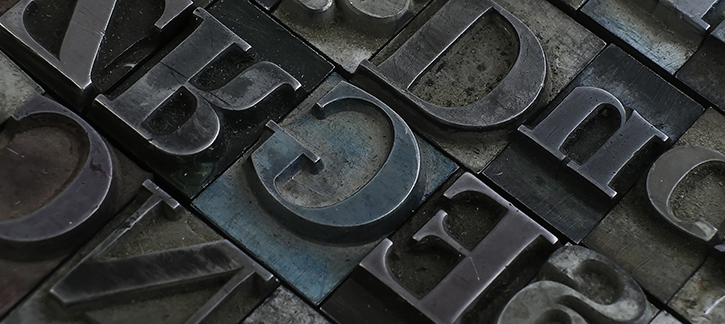WordPress is introducing a massive update to their content management system (CMS). The new update – WordPress 5.0, also called “Gutenberg” – features a more visual editor and a more modern user experience, particularly for new users. As with all major updates, businesses and organizations should be aware of the key changes being implemented.
For those curious, the name of the update is an homage to Johannes Gutenberg, who invented the moveable printing press in 1439.
What is included in WordPress Gutenberg?
First and foremost, WordPress Gutenberg introduces Blocks. You can think of a Block as a single functional component – out of the box, this update includes Blocks for headings, subheading, paragraphs, quotes, images, videos, lists, buttons, and more. We welcome the addition of Blocks, as they make it easier to build a webpage that looks and feels custom.
With Blocks, moving one section above another happens with the click of a button. The same goes for moving sections down, deleting them or changing their format. One of the main goals of Gutenberg was to make it even faster to edit content. Now you’re free to make small tweaks without the fear of breaking the entire page. (Don’t worry, we’ve all been there!)
Gutenberg also refreshes the user interface for WordPress admins. Living up to the name, this WordPress update is all about the writing. The redesign allows marketers and business owners to write content without getting distractions.
Finally, WordPress 5.0 also is built on the latest web technologies. Gutenberg was developed using the WordPress REST API, JavaScript, and React. Automattic, the company behind WordPress, took this opportunity to modernize the CMS’ admin leveraging a modern headless build approach to provide the best user experience possible.
Why is WordPress making this update?
The WordPress team wanted to modernize their CMS: making the experience write-focused while introducing new, powerful features and their famous extensibility. The update helps WordPress admins edit content on the fly, including from a tablet or mobile device.
Periodically, content management systems have to be updated to support new technologies and incorporate feedback from both admins and site visitors. For example, there were updates coinciding with the introduction of Retina displays and major browser updates. Over the year, WordPress has added support for Plugins, new fonts, language translation, and much more.
It’s also important to note that Automattic provides named updates for major changes. In the past, we have seen names like “Tipton” and “Evans”. Typically, the updates relate to Jazz music. The use of “Gutenberg” shows the importance of WordPress 5.0, as the company has deviated from its Jazz theme to use the name of the man who invented the movable printing press.
Who is affected by WordPress Gutenberg?
Current WordPress customers, including those that use the open-source content management system (found at WordPress.org), will be affected by the Gutenberg update. The impact is far-reaching because Automattic is updating their fundamental content structure and admin experience. And for a content management system, well, that is a major change.
This update also reduced the need to rely on third-party plugins. As part of the update progress from WordPress 4.x to 5.0, admins should carefully evaluate their current theme and plugins as significant changes have been made. In many more areas, WordPress users can leverage WP tools instead of the community plugins.
We recommend that all existing WordPress customers take the time to learn how their site will be affected by the upgrade to WordPress 5.0 Gutenberg. There is a potential that content links and themes can break due to the update.
How do you handle the Gutenberg update without downtime?
There are two ways to update to Gutenberg without facing bugs or downtime. The first option is to update your WordPress site, including its data structure, to support Gutenberg. There are resources available – including getting familiar with Gutenberg today. In addition, the Gutenberg beta is available today for those eager to test the update.
Gutenberg is currently in beta, which means some of the kinks are still being worked out. As a result, we recommend that existing customers take their time testing both their data and their theme with the new WordPress 5.0 update. Even when Gutenberg is officially released, we anticipate that WordPress sites will require moderate to significant rework in order to function properly.
The second option is to install the Disable Gutenberg plugin. Over time, we recommend that sites do upgrade to Gutenberg to take advantage of its new features. But disabling Gutenberg for now gives businesses the time they need to update, test, and validate that their WP site is working as intended with this new, massive update.
Conclusion
The modern software development life cycle requires constant updates – ranging from supporting new devices to security patches, bug fixes, and feature enhancements.
Truth be told, a website or web application is never truly 'finished'.
The WordPress Gutenberg update, to be released in November 2018, introduces a host of new and exciting features! At Tragic Media, we look forward to building with Blocks. While there are many benefits in the long term, we also want to advise people of potential roadbumps. We recommend that existing sites install Disable Gutenberg until upgrade paths from WordPress 4.x to 5.0 have proven to be stable and reliable.
Overall, we believe this is a big step forward. Automattic, the makers of WordPress, are adding modern features to their CMS and improving the admin experience at the same time.
Interested in upgrading to WordPress 5.0? Contact us at Tragic Media! We can help you take full advantage of Gutenberg while also providing a seamless transition experience. Whether you are looking to make small changes or completely rethink your CMS solution, reach out to us.

